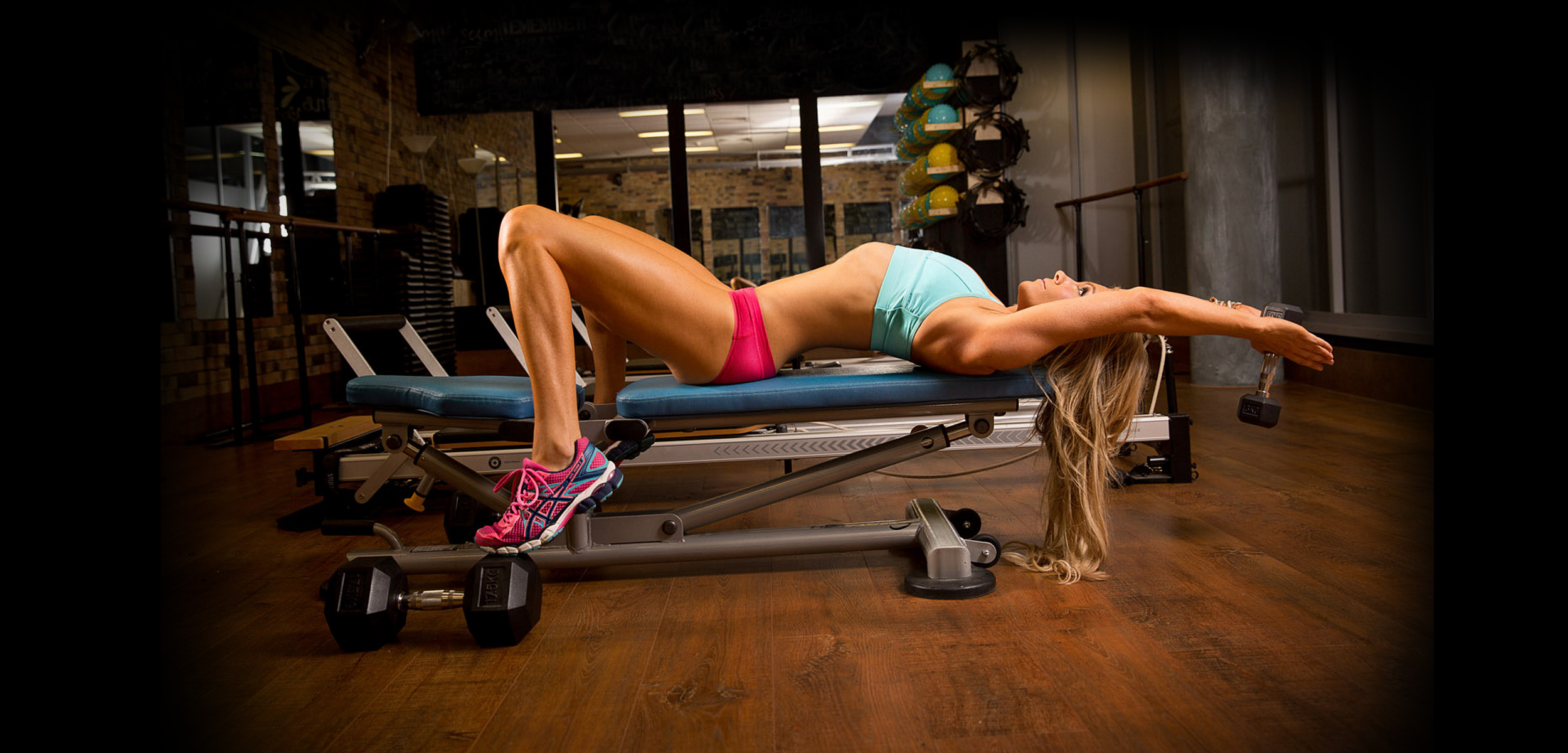The Best Pullover Exercise You're Not Doing
Dr. Joel Seedman, Ph.D.
Here’s one of my NFL athletes Jarius Wynn performing a unique pullover variation using a glute bridge, head off protocol. Here are 4 reasons why this is so effective not only for building functional mass and hypertrophy but also for eliminating joint stress and faulty posture.
1. Eliminates excessive ROM at the shoulder joint.
Excessive range of motion on pullovers is a very common mistake. Similar to other movements, the goal should be natural and optimal range of motion not maximal range of motion. In fact pullovers are often considered a semi high risk exercise for individuals with shoulder issues. This is predominately because most lifters use too much range of motion and overstretch in the bottom position.
This glute bridge variation eliminates this issue altogether as allowing the dumbbells to extend too far back will make it feel like the lifter is going to tilt off the back of the bench. This also causes the lifter to instinctively slow down the eccentric phase in order to eliminate excessive momentum that might pull them off the bench. As a result this builds more functional strength and hypertrophy not to mention taking stress off the shoulder joint.
2. Creates A Better Decline Bench
Performing pullovers on a decline is one of my favorite upper body movements. Not only does it crush the lats, chest, shoulders, and triceps, but it also provides more constant tension, similar to how a cable or machine would. That’s because the force vectors involved with a decline angle help maintain constant tension by pulling on the targeted musculature throughout the movement unlike the flat position where tension is predominantly at the bottom portion of the movement.
Unfortunately, the decline pullover performed on a decline bench minimizes one of the key benefits of pullovers which is core and abdominal recruitment. Although the core is still working during traditional decline pullovers, the intensity of activation to the core is less than in other variations where the legs are free, predominantly because the legs are simply hanging from the decline support pads. When the core musculature isn’t firing at the same intensity, particularly during pullovers, it can lead to excessive range of motion and destabilization at the shoulder joint. That’s because there is a direct correlation between core activation, spinal rigidity, and shoulder stability.
When the core is intensely engaged, it helps keep the spine in a more neutral position. In turn this assists in centrating and packing the glenohumeral joint into the most biomechanically sound and stable position. Eliminate this effect and the chance of performing pullovers with excessive range of motion becomes more likely especially since over-stretching in the bottom of a pullover is already a common mistake. Performing pullovers with a glute bridge turns the movement into a decline variation but eliminates the common pitfalls of decline pullovers.
3. Eliminates Excessive Lumbar Arch
Excessive lumbar arch is another common problem on pullovers due to the significant extension forces attempting to extend the torso and spine. The glute bridge head-off pullover is one of the most effective pullover variations for eliminating this issue.
When it comes to minimizing excessive lumbar arch and extension, the key is simultaneous activation of the anterior core and posterior chain. Eliminating excessive range of motion at the shoulder joint is also another critical factor as excessive stretching in the bottom position also tends to extend the lumber spine. The decline glute bridge pullover represents the perfect variation for eliminating these issues as it incorporates all of the aforementioned anti-extension features.
In essence the core and posterior chain must work overtime to keep the body from over-extending in the decline position. Lack of core tension, weak posterior chain recruitment, or excessive range of motion will literally make it feel like the lifter will flip off the back of the bench. Besides eliminating excessive lumbar extension, this is one of the most intense pullover variations you’ll ever attempt as the degree of full body tightness and intramuscular tension is through the roof.
4. Promotes Improved Postural Alignment.
I’m a big fan of incorporating head-off training protocols for a number of supine exercises (read more about the Head Off Protocol Here). That’s because it eliminates cervical compression that typically occurs when the base of the head is pressed into another surface. Reducing these compressive forces and allowing cervical elongation to occur not only improves neck strength and postural alignment it also allows optimal t-spine extension to occur. In turn this optimizes scapulohumeral rhythm and glenohumeral joint positioning as the shoulders can maintain a more centrated and packed position without moving into excessive internal rotation - a common problem when the neck is pushed into cervical flexion.
The head-off glute bridge pullover is one of the most effective variations for instilling these optimal postural mechanics as it promotes improved spinal alignment and proper shoulder positioning. In fact, this particular pullover variation is surprisingly shoulder friendly due to the optimal mechanics it ingrains.
Protocols and Training Recommendations
I recommend several sets of 5-8 reps performed in an eccentric isometric protocol. I also suggest using a spotter behind the lifter on this movement, particularly the first several times through in case he or she begins to extend backwards off the bench.
if you’re looking for a training program and instructional guide that teaches you how to incorporate different movements such as these into your training routine, check out my Complete Templates Series

























